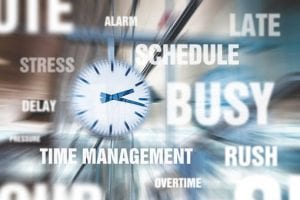 In January 2018, the United States established an import tariff on silicon solar cells and modules. These tariffs became effective on February 7, 2018 and will charge foreign producers 30% of the product’s value to enter U.S. markets. The tariffs will drop by 5% annually before expiring in 2022 (Chart 1). The first 2.5 gigawatts of solar cells are exempt from the tariffs (Duke SciPol, 2018). In addition to the solar module and cell tariffs, the U.S. recently announced a 25% tariff on steel imports and a 10% import on aluminum, which could add an additional 2%-5% to PV system costs (GTM Research, 2018).
In January 2018, the United States established an import tariff on silicon solar cells and modules. These tariffs became effective on February 7, 2018 and will charge foreign producers 30% of the product’s value to enter U.S. markets. The tariffs will drop by 5% annually before expiring in 2022 (Chart 1). The first 2.5 gigawatts of solar cells are exempt from the tariffs (Duke SciPol, 2018). In addition to the solar module and cell tariffs, the U.S. recently announced a 25% tariff on steel imports and a 10% import on aluminum, which could add an additional 2%-5% to PV system costs (GTM Research, 2018).
According to Natter & Martin (2017) in Bloomberg New Energy Finance, the 30% tariff will increase photovoltaic (PV) solar module costs by roughly 10 cent/watt. Based on this estimate, the average module price would be around $0.41 per watt/DC which is still lower than the average module price in 2016 when the U.S. posted a record number of solar capacity installations. The impact of the import tariffs is expected to be more significant on the development of utility scale projects because the module cost accounts for an estimated 32% of the total utility scale solar installation cost. The impact is much less for other solar projects, as the module cost only accounts for 13% of residential installations and 19% of the commercial project (Chart 2).

Potential Implications
Now that the solar import tariffs are established, what are the implications to the solar manufacturers, installers, and consumers? “The tariffs could even the solar playing field from the perspective of manufacturing, but risk U.S. jobs in the solar installation and management industry while negatively impacting global trade agreements (Duke SciPol, 2018).” A tariff is essentially an additional tax applied to goods coming into a country in foreign trade. This will increase the price of the imported goods, thus protecting domestic manufacturers from unfair foreign competitive advantages such as low labor wages, dumping practices, or lower production costs due to lack of comparable environmental and safety regulations. In general, applying an import tariff to imported goods promotes domestic production and supports domestic employment. However, while a tariff can support domestic manufacturing, in some cases, a tariff can also increase the final price of the goods to consumers.
U.S. Solar Manufacturing Updates
 Between 2012 and 2016, U.S. domestic PV solar module production expanded by 24 percent. Still, falling prices have caused more than 24 domestic PV producers to file bankruptcy or close their U.S. operations (Congressional Research Service, 2018). Following the implementation of the import tariffs, a 2018 Solar Industry Update Report from the National Renewable Energy Laboratory summarized several examples of recent U.S. solar manufacturing activities. First, JinkoSolar confirmed plans to invest $50 million to build a 400 megawatt module assembly plant in Jacksonville, Florida. In addition, SunPower announced plans to purchase the SolarWorld Americas manufacturing facility in Oregon which offers solar cell production capacity of 430 megawatts with an additional 500 megawatts of module capacity. Finally, due largely to recent U.S. tax reform, First Solar announced a $400 million investment in Ohio and recently broke ground on a 1.2-GW capacity plant, employing 500 workers to manufacture its new Series 6 modules.
Between 2012 and 2016, U.S. domestic PV solar module production expanded by 24 percent. Still, falling prices have caused more than 24 domestic PV producers to file bankruptcy or close their U.S. operations (Congressional Research Service, 2018). Following the implementation of the import tariffs, a 2018 Solar Industry Update Report from the National Renewable Energy Laboratory summarized several examples of recent U.S. solar manufacturing activities. First, JinkoSolar confirmed plans to invest $50 million to build a 400 megawatt module assembly plant in Jacksonville, Florida. In addition, SunPower announced plans to purchase the SolarWorld Americas manufacturing facility in Oregon which offers solar cell production capacity of 430 megawatts with an additional 500 megawatts of module capacity. Finally, due largely to recent U.S. tax reform, First Solar announced a $400 million investment in Ohio and recently broke ground on a 1.2-GW capacity plant, employing 500 workers to manufacture its new Series 6 modules.
U.S. Solar Installation Trends
 The United States posted a record year for PV solar installations in 2016 reaching 14.8 gigawatts (DC) of installed solar capacity. Just a year later, the U.S. experienced a 30% decline in installations, with a total of 10.6 gigawatts (DC) of solar capacity additions in 2017 (USDOE/EERE, 2018). Following the 2018 import tariff on solar module and cell imports, the U.S. solar market added 2.5 gigawatts of PV solar in the first quarter 2018, representing annual growth of 13%. Furthermore, the latest U.S. Solar Market Insight Report estimates that “solar’s growth in 2018 will mirror 2017’s 10.6 GW before growing more robustly in 2019 and then accelerating in the early 2020s (Solar Energy Industries Association, 2018).”
The United States posted a record year for PV solar installations in 2016 reaching 14.8 gigawatts (DC) of installed solar capacity. Just a year later, the U.S. experienced a 30% decline in installations, with a total of 10.6 gigawatts (DC) of solar capacity additions in 2017 (USDOE/EERE, 2018). Following the 2018 import tariff on solar module and cell imports, the U.S. solar market added 2.5 gigawatts of PV solar in the first quarter 2018, representing annual growth of 13%. Furthermore, the latest U.S. Solar Market Insight Report estimates that “solar’s growth in 2018 will mirror 2017’s 10.6 GW before growing more robustly in 2019 and then accelerating in the early 2020s (Solar Energy Industries Association, 2018).”
What Should We Expect In 2018?
 There have been numerous cases made both supporting and contesting the future impacts of the solar import tariffs on the U.S. solar industry. Based on recent installations and pricing trends, I would suggest the industry has proven it can not only survive, but thrive at higher module price points. Remember, in 2016 the U.S. solar industry posted a record number of capacity installations when solar module prices were higher than the estimated 2018 module prices including the impact of the additional 30% import tariff.
There have been numerous cases made both supporting and contesting the future impacts of the solar import tariffs on the U.S. solar industry. Based on recent installations and pricing trends, I would suggest the industry has proven it can not only survive, but thrive at higher module price points. Remember, in 2016 the U.S. solar industry posted a record number of capacity installations when solar module prices were higher than the estimated 2018 module prices including the impact of the additional 30% import tariff.
By definition, the tariff will absolutely increase the cost of imported solar modules. However, as described above it is a percentage-based tariff that is scheduled to decrease over time. In addition, the cost of solar modules has decreased significantly since 2010, a trend that is expected to continue. As a result, the impact on solar module prices should be the greatest in 2018, then decreasing each year as the actual price of solar modules continues to fall, combined with reduced tariff rates. While the import tariffs will likely reduce the number of utility scale projects, it is important to remember there are other factors affecting solar industry development. For example, state and local government policy and goals as well as utility rules and regulations will greatly influence the future development of renewable energy projects.
Interested in Learning More About Solar? . . . Join Us at Farm Science Review!
The 2018 Farm Science Review (FSR) is September 18-20 at the Molly Caren Agricultural Center near London, Ohio. Farm Science Review offers visitors the opportunity to learn about the latest agricultural innovations from experts from the College of Food, Agricultural, and Environmental Sciences at The Ohio State University.
If you’re interested in learning more about photovoltaic solar energy and peak energy demand management on your farm, there’s a place just for you at Farm Science Review: Ohio State’s Energy Tent. Inside, you’ll find displays and information on solar energy, peak demand energy, anaerobic digestion (which turns food waste and manure, for example, into biogas), and biobased products and materials, like those made from soybeans and corn. CFAES experts will be on hand and available to answer your questions.
The OSU Energy Tent is located at the corner of Kottman Street and Land Avenue. For additional information, please click here to view the most up-to-date interactive map of the 2018 Farm Science Review exhibit area.
References:
Congressional Research Service. (2018, Feberuary ). Domestic Solar Manufacturing and New U.S. Tariffs. Retrieved from Federation of American Scientists: https://fas.org/sgp/crs/misc/IF10819.pdf
Feldman, D., Hoskins, J., & Margolis, R. (2018, May). Q4 2017/Q1 2018 Solar Industry Update. Retrieved from National Renewable Energy Laboratory : https://www.nrel.gov/docs/fy18osti/71493.pdf
Duke SciPol. “Trump Administration’s Imposition of Tariffs on Imported Solar Cells and Modules” available at http://scipol.duke.edu/content/trump-administrations-imposition-tariffs-imported-solar-cells-and-modules (03/23/2018).
Natter, A., & Martin, C. (2017). U.S. Solar Developers Relieved at Small Import Tariff Proposals. Retrieved from Bloomberg: https://www.bloomberg.com/news/articles/2017-10-31/u-s-trade-panel-proposes-duties-of-up-to-35-in-solar-case-j9frwy6w
Office of the United States Trade Representative. (2018). Section 201 Cases: Imported Large Residential Washing Machines and Imported Solar Cells and Modules. Washington D.C.: Executive Office of the President.
Pyper, J., 2018. GTM Research Steel and Aluminum Tariffs Could Add 2 Cents per Watt to Utility-Scale Solar Projects. https://www.greentechmedia.com/articles/read/steel-aluminum-tariffs-could-add-2-cents-per-watt-to-utility-scale-solar#gs.oJRSsU4
Solar Energy Industries Association. (2018). Solar Market Insight Report 2018 Q2. Retrieved from Research and Resources: https://www.seia.org/research-resources/solar-market-insight-report-2018-q2
Solar Energy Industries Association. (2018, June). US Solar Market Adds 2.5 GW of PV in Q1 2018, Growing 13% Year-Over-Year. Retrieved from Solar Energy Industries Association News Center: https://www.seia.org/news/us-solar-market-adds-25-gw-pv-q1-2018-growing-13-year-over-year
U.S. Department of Energy’s Office of Energy Efficiency and Renewable Energy (USDOE/EERE). (2018, May). Quarterly Solar Industry Update. Retrieved from Office of Energy Efficiency and Renewable Energy Solar Energy Technologies Office: https://www.energy.gov/eere/solar/quarterly-solar-industry-update
U.S. Department of Energy, Energy Information Administration (USDOE/EIA), (2018). Tax credits and solar tariffs affect timing of projected renewable power plant deployment https://www.eia.gov/todayinenergy/detail.php?id=36212
Eric Romich is an Associate Professor and Extension Field Specialist, Energy Development.

 Oh no, there’s that email again reminding me that my blog is due! When will I find the time to write about what I do? Yes, I hear all of the many organized people out there thinking, “Here is a great candidate for Time Management training.” Been there-done that and actually did pick up some good pointers to help keep the many demands of life activities well organized. A few of these timely time saving tips follow:
Oh no, there’s that email again reminding me that my blog is due! When will I find the time to write about what I do? Yes, I hear all of the many organized people out there thinking, “Here is a great candidate for Time Management training.” Been there-done that and actually did pick up some good pointers to help keep the many demands of life activities well organized. A few of these timely time saving tips follow:






 When you stop to think how many times you have looked at your social media, personal email, or YouTube, it’s not such a stretch to see how many Americans accumulate 10 hours and 39 minutes of entertainment consumption in a day. Internet content is expected to consist of 82 percent of video traffic by 2020, which will also significantly increase the time spent by Americans consuming entertainment yearly (Cisco Visual Networking Index, 2016).
When you stop to think how many times you have looked at your social media, personal email, or YouTube, it’s not such a stretch to see how many Americans accumulate 10 hours and 39 minutes of entertainment consumption in a day. Internet content is expected to consist of 82 percent of video traffic by 2020, which will also significantly increase the time spent by Americans consuming entertainment yearly (Cisco Visual Networking Index, 2016).